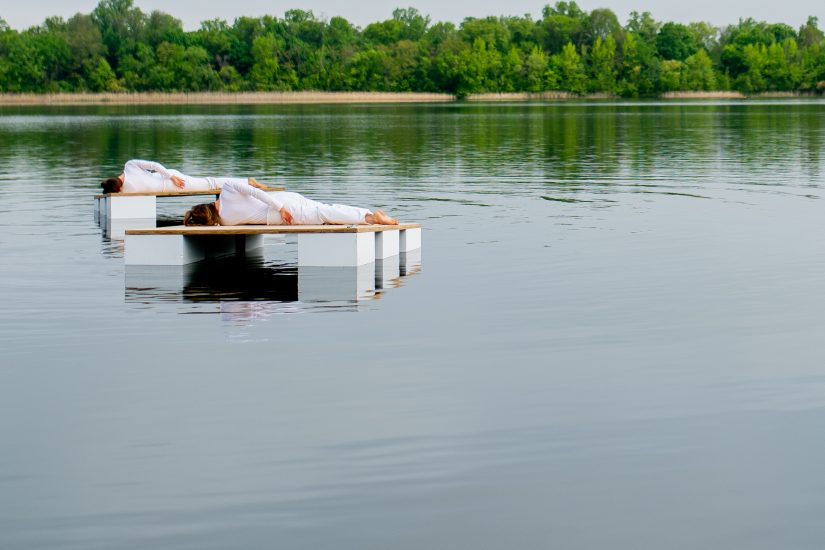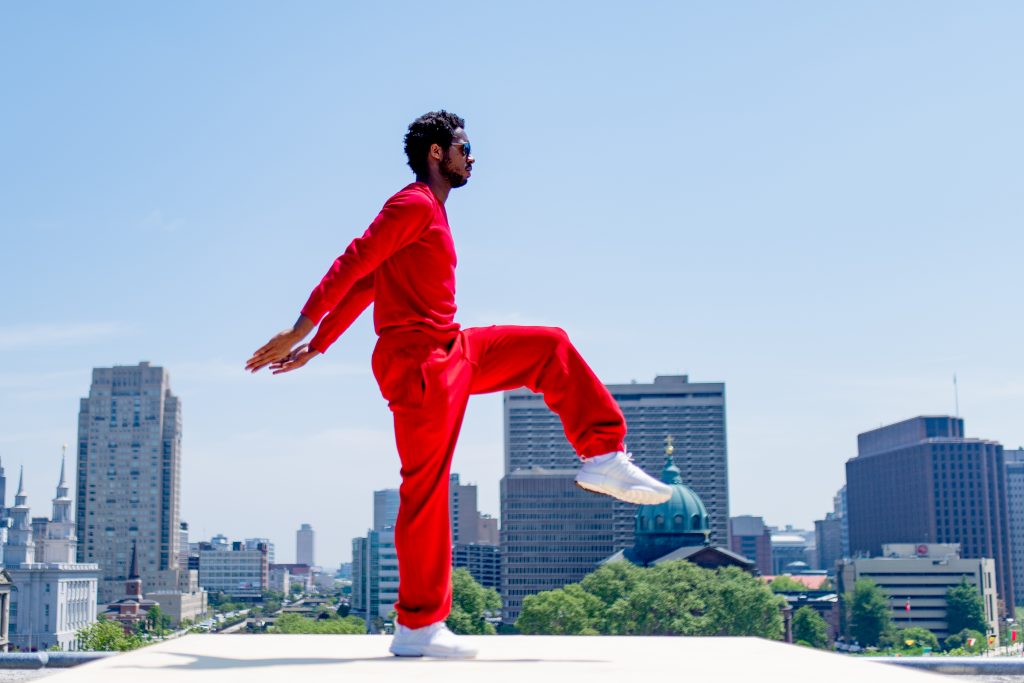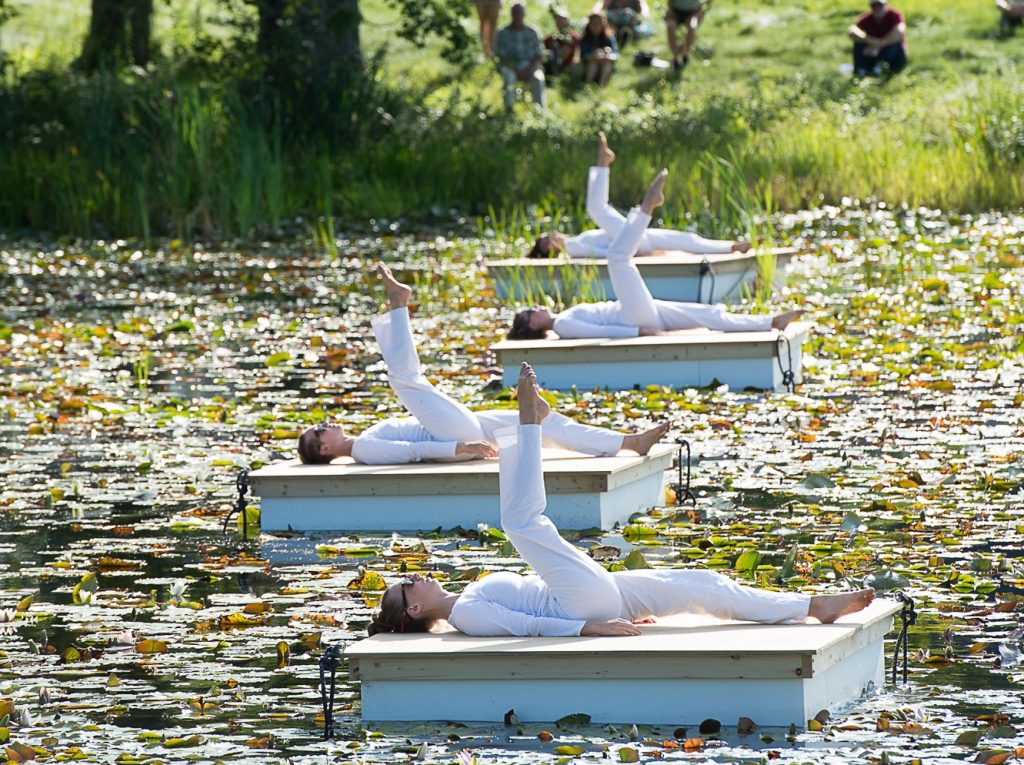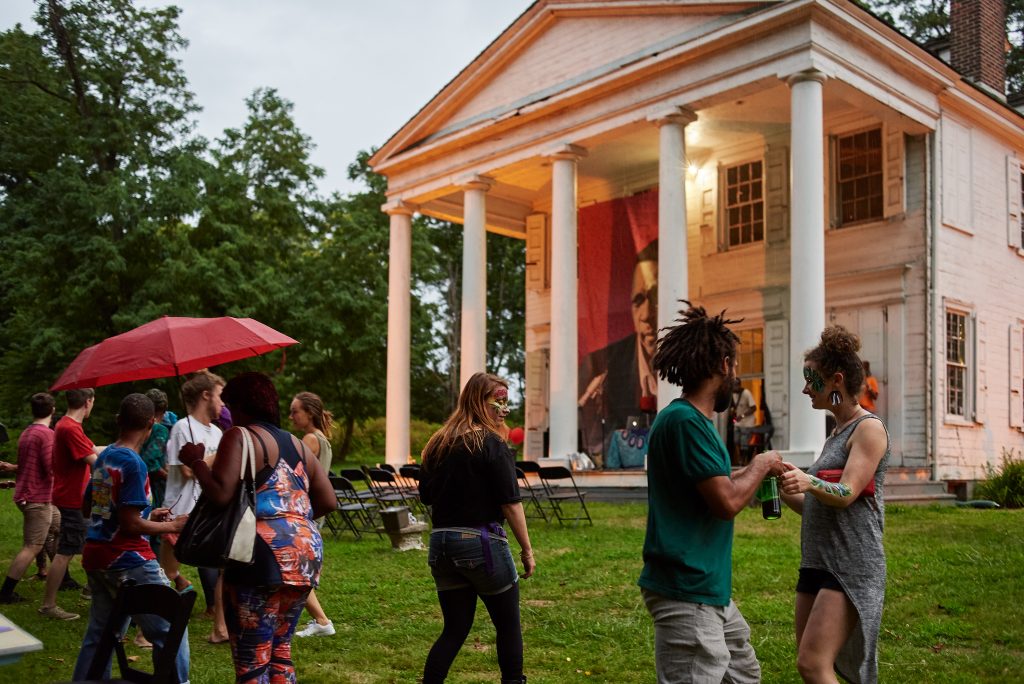From September 24-29, In Motion, In Place: Trisha Brown Dance Company in Fairmount Park will premiere in Philadelphia for the first time, inviting audiences to experience Philly’s favorite public spaces like never before.
In Roof Piece, the rooftops of iconic cultural institutions around Logan Circle serve as an expansive stage for 360-degree choreography. The newly reopened Strawberry Mansion Reservoir at the Discovery Center becomes a stage in Raft Piece. In Foray Forêt the wooded grounds of Mount Pleasant mansion host dancers in golden costumes designed by artist Robert Rauschenberg. Together, these works invite Philadelphians to experience their park in a whole new way, leaving us inspired by motion, and by place.
Before the premiere on September 24, we had the opportunity to chat with Trisha Brown Dance Company about the importance of bringing dance to public spaces and what went into selecting these three sites in Fairmount Park.
Can you talk about the differences between staging these works in a more traditional indoor performance setting versus outside in urban and natural environments?
It’s worth noting that a significant number of Trisha’s works were created very intentionally for outdoor performance in an urban environment: notably, Man Walking Down the Side of a Building (1970) and Roof Piece (1971) were originally staged across the industrial landscape of SoHo, while, as the name suggests, Raft Piece (1973) is performed on floating platforms in a natural setting. In these and other early works, Trisha used unconventional performance spaces as a way to bring art closer to people’s lives, and offer audiences different ways to see art. The same impulse is involved in our restaging of Foray Forêt (1990) at Mount Pleasant: by taking the dance out of a theater, we’re able to bring the audience closer – allowing them to experience both the arts and the park in new ways.
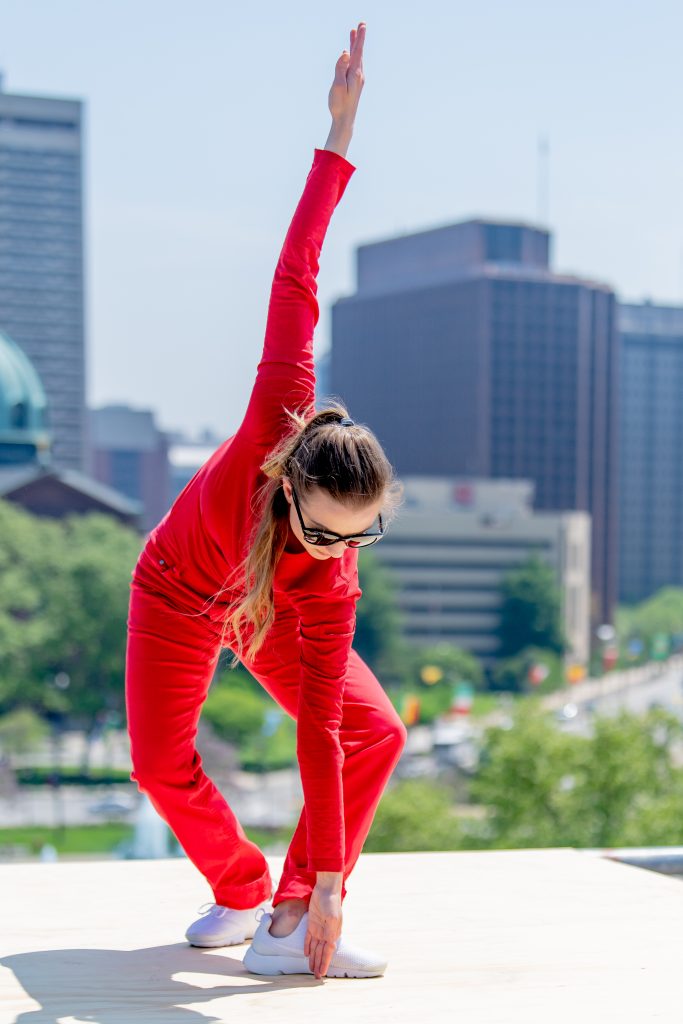

Photos by Vikki Sloviter 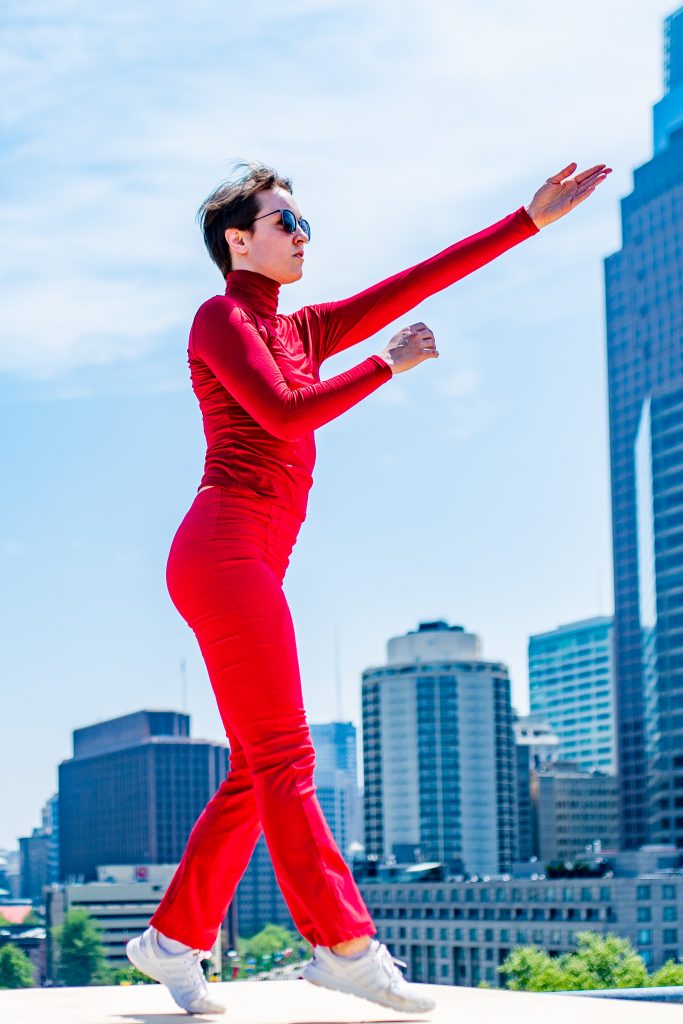
What is the importance of bringing the arts, and dance in particular, into public spaces?
It’s critically important to do because it weaves the arts into everyday life, inspiring, surprising, and available to all. Trisha may have placed her dancers at the top of tall buildings, but she never wanted to see her art placed on a pedestal. She saw it as a way to break down barriers – barriers to access, barriers to participation, barriers between different types of art, and most of all, perceptual barriers that the arts are only for other people.
With free performances and other activities at multiple sites and different times throughout the week, In Motion, In Place is meant for everyone: from dance fans to people who would never think of going to a theater, families, children, commuters and folks just passing by.
Video by Four/Ten Media
Trisha Brown Dance Company has performed all over the world. What excites you most about bringing this work to Philadelphia?
There is the thrill of breaking new ground, since this is the first time that the Park has hosted a performance project of this scale. But we also see In Motion, In Place as an important homecoming of sorts. Trisha and the Company have been involved in a series of amazing projects in Philadelphia, and some of the most memorable have been joint efforts between multiple organizations.
In 2002, Trisha performed the U.S. premiere of her last solo work, It’s a Draw at the Fabric Workshop and Museum, in a production organized by the Philadelphia Museum of Art, while in 2015-16, Bryn Mawr College brought together a group of co-presenters including The Barnes Foundation, Drexel University, Pennsylvania Ballet, Swarthmore College, Temple University and University of the Arts for a year-long celebration of Trisha’s career.
One of the most satisfying aspects of working on our current project is the way the Conservancy has created a diverse coalition of partners, from the major Philadelphia landmarks participating in Roof Piece, to the Park gardeners and groundskeepers, and on to local musicians, the City of Philadelphia, and community-based partners like Tiny WPA and the Outward Bound program at the Discovery Center in East Fairmount Park. People attending the week’s events will be able to see how a whole range of participants have shaped and contributed to our performances.
What drew you to these three sites – Logan Circle, Mount Pleasant, and the Discovery Center? What do you look for in terms of site selection?
It was really a matter of collaborating with the Conservancy to match their knowledge of the Park with our repertory, and our shared goals. We want to find places where the work will have the most resonance, and where the place itself illuminates the performance. There are a lot of things that have to be considered to get the balance right. Some locations stand out as natural backdrops for individual works: I was immediately attracted to the woodland setting around Mount Pleasant for Foray Forêt (Forêt is the French word for forest), and the Reservoir provides an ideal location for Raft Piece, while also drawing attention to the Discovery Center, one of the newest additions to the Park.
In choosing sites, we think constantly about the audience’s experience, and each location has its own challenges: in producing Roof Piece at Logan Circle, for instance, we’re navigating one of the busiest public spaces in the entire city, and have to pay attention to how to shepherd people safely through traffic to view a performance that will take place on buildings all around the Circle. But having Trisha’s work performed on top of some of Philadelphia’s most iconic buildings is worth the effort, and we’re looking forward to this opportunity to share three very different works in three very different settings with the entire community.
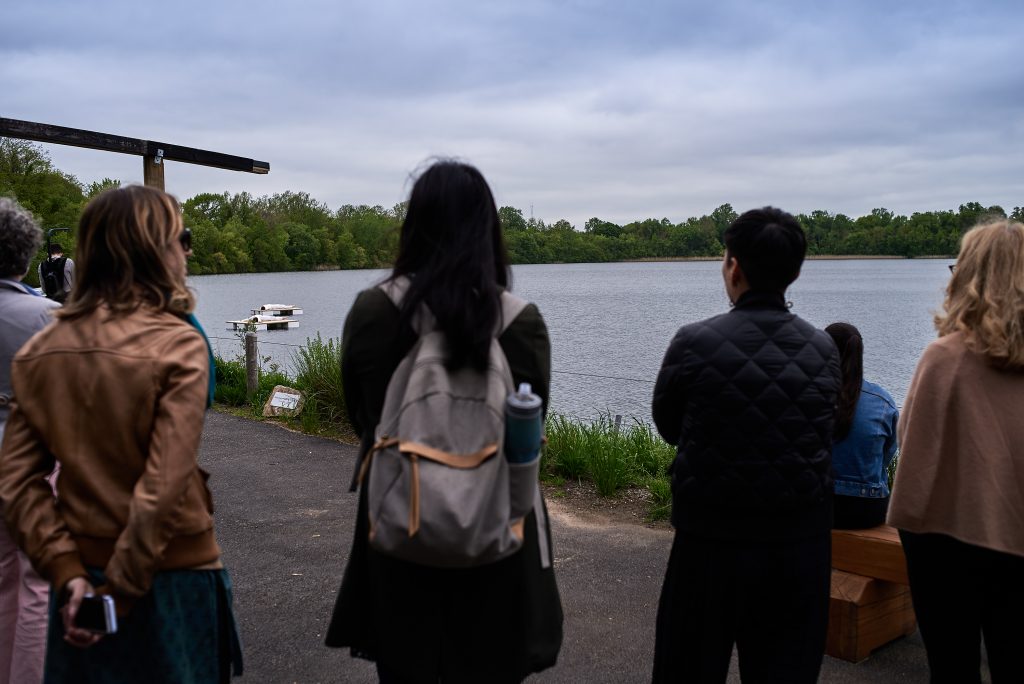
What kind of experience do you hope audiences will come away with?
It can be different for different people, but the common thread is that we hope people feel like they’ve experienced something new. For some, the performances and public events may kindle a deeper interest in dance, while for others, In Motion, In Place may be mostly about rediscovering their own back yard, as it were – seeing familiar places in a new way, and perhaps being introduced to places that they didn’t even know existed. There’s also an important opportunity to build connections, a sense of community and a sense of civic pride. Most of all, we want people to come away from the week with a sense of belonging – that these spaces belong to everyone, and that everyone can truly say that “Fairmount Park is My Philly Park.”
In Motion, In Place: Trisha Brown Dance Company in Fairmount Park has been supported by The Pew Center for Arts & Heritage. It is presented by Fairmount Park Conservancy with the cooperation of Philadelphia Parks & Recreation and other partners. Learn more here.
